The Best of Rome in Three Days
Artsy Traveler contains affiliate links for products and services I personally use and can happily recommend. As an Amazon Associate, I earn from qualifying purchases. Please read the Disclosure for more information. If you make a purchase through these links, at no additional cost to you, Artsy Traveler earns a small commission. Thank you!
Rome wasn’t built in a day so don’t try to see all of it in a day. You’ll exhaust yourself and come away feeling ripped off.
The Eternal City demands your time. Even three full days doesn’t come close to doing justice to Bella Roma, but it’s better than one.
This post presents my suggestions for how to spend three full days in the eternal city.
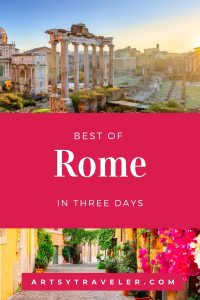
Best of Rome at a Glance
- Staying in Sant Angelo Apartments in the Jewish Ghetto
- Exploring the Trastavere
- Checking out Domus Aurea
- Visiting the Borghese Gardens
- Getting out of town to explore the Appian Way
Day 1: Ancient Rome
You could easily spend several days just focusing your sightseeing energies on ancient Roman sites. They’re everywhere! But top of the list are the Colosseum and the Forum, the Domus Aurea (if you’re in Rome on a Saturday or Sunday), and the Pantheon.
Colosseum and Forum
Start your day with an early visit to the Colosseum followed by a wander through the Forum. Of the two Roman sites, the Colosseum gets the most crowded, so be sure to see it first. Alternatively, tour the Colosseum and Forum later in the day when the crowds may be less.
Also known as the Flavian Amphitheatre, the iconic Colosseum has become the symbol of Rome. Construction of the Colosseum began in AD 72 by order of the Emperor Vespasian and was completed in AD 80. It was the largest colosseum in the world with a capacity of 50,000 spectators.
Seeing it now, you’ll be hard-pressed to believe that it held that many people.
I was a bit underwhelmed the first time I saw the interior of the Colosseum. My imagination couldn’t quite conjure the scenes of wild animals tormenting terrified Christians, which is probably just as well.
That said, put the Colosseum at the top of your Rome sightseeing list. Just make sure to buy your tickets in advance for both the Colosseum and the Forum.
Another option is to book a nighttime tour of the Colosseum that takes you to the Colosseum’s underground corridors, the arena, and the first ring of the seating area. I haven’t taken this tour, but it sounds intriguing and crowd-free (always a selling point for me).

Purchase tickets here for the Colosseum Nighttime tour.
Domus Aurea
The Domus Aurea is in the vicinity of the Forum and Colosseum. We visited the Domus Aurea in 2001, not long after it opened in 1999 when we were able to wander freely around the massive excavated rooms. The site was closed in 2005 and reopened in 2007, with more galleries added in 2015. The number of visitors is now restricted, with everyone required to wear a helmet.
Built by the Emperor Nero in 64 AD, the Domus Aurea had 300 rooms and occupied about 50 hectares–and was used exclusively for parties. That Nero was some kind of party animal.
Visit the Domus Aurea by guided tour and only on Saturdays and Sundays. If you can get tickets, go. The guided tour consists of a twelve-stage itinerary that includes a virtual reality installation in the Sala della Volta Dorata. Visitors are purportedly transported to an ancient, rich, and magical world.

Pantheon
The area around the Pantheon in central Rome is always hopping. Visit later in the day when the crowds are thinning.
The Pantheon is remarkable for its dome–still the world’s largest unreinforced concrete dome, which is amazing, considering the Pantheon was built 2,000 years ago. Thanks to continuous use for two millennia, the Pantheon is one of the best-preserved buildings from ancient Rome. Originally a temple, the Pantheon is now a church.
See the Pantheon on your own or, for a few euros more, take a guided tour.
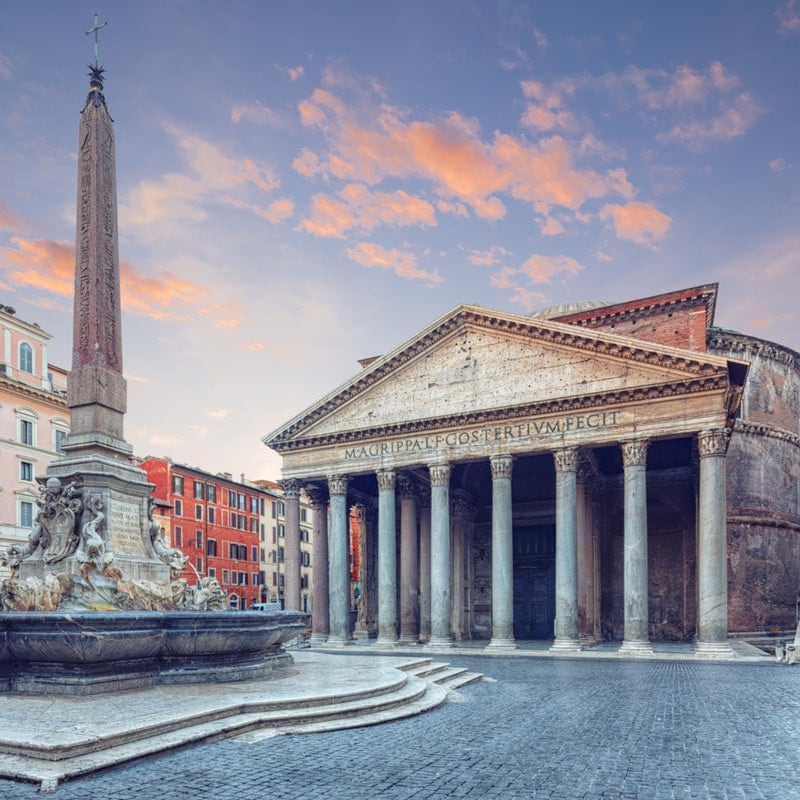
After touring the Pantheon, treat yourself to a gelato and watch the world go by from one of the cafés bordering the piazza in front of the Pantheon. I still remember fondly the fig gelato I sampled while visiting the area.
Spend the evening getting lost in the maze of streets leading from the Pantheon to the Piazza Navona and then find a place for dinner. Choose small restaurants on side streets that are filled with locals.
Enjoying this post? Subscribe to Artsy Traveler to Receive Valuable Travel Tips and Your FREE Guide: 25 Must-Do Artsy Traveler Experiences in Europe for 2025
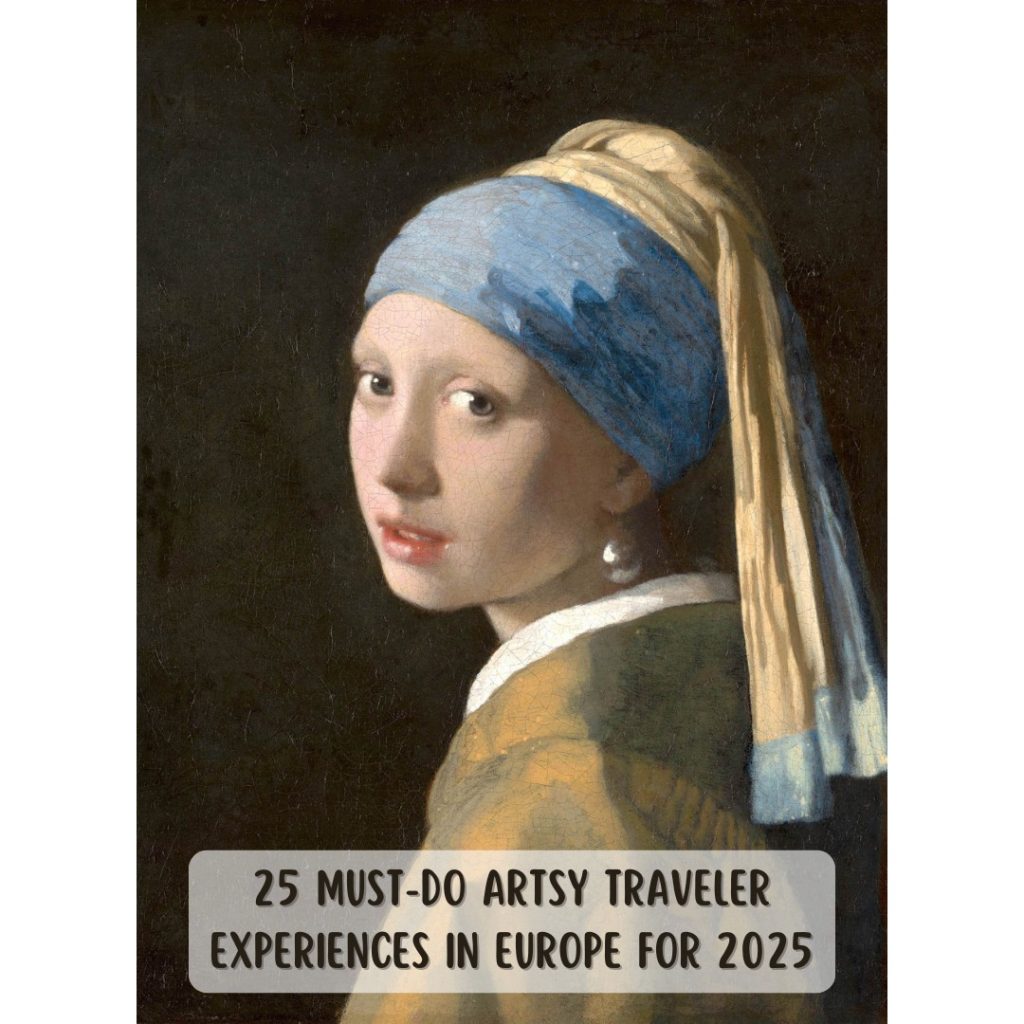
The area around the Piazza Navona is my favorite part of Rome.
Day 2: Catholic Rome
Rome bristles with churches, some dating back to Roman times and most containing priceless works of art, particularly from the Renaissance and Baroque eras. You can’t see all the churches in one day, nor should you try!
Focus first on St. Peter’s Basilica and the Vatican Museum and then go back across the Tiber to visit San Pietro di Vincoli and the Basilica of San Clemente.
St. Peter’s Basilica and the Vatican Museum
A visit to St. Peter’s Basilica and the Vatican Museum requires stamina. Line-ups are inevitable even with advance tickets. You can’t avoid the long, sweaty trek through room after room of the Vatican Museum before finally arriving in the Sistine Chapel.
But the trek is worth it. Just make sure you buy your tickets for the Vatican Museum well in advance.
Sistine Chapel
The Sistine Chapel heaves with tourists. There’s no escaping them (and you are one of them!) so just tilt your head back and admire Michelangelo’s ceiling. My favorite memory of the Sistine Chapel is when, on my first visit at the age of 18, I heard a woman behind me say to her companion, “Do y’all think it was done by hand?” I resisted the temptation to turn around and tell her it was paint by numbers.
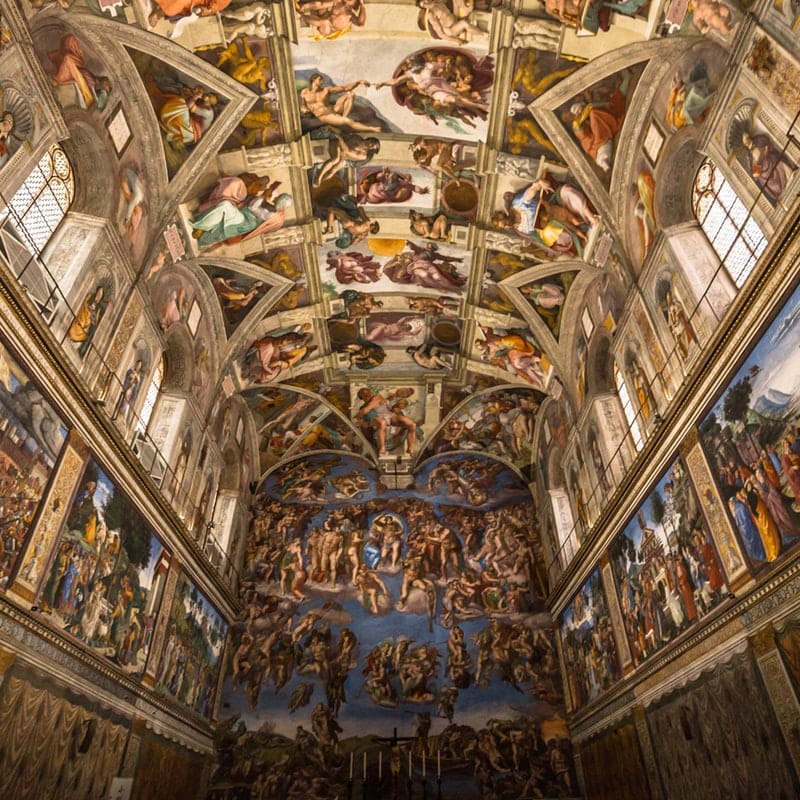
The Sistine Chapel was restored by Pope Sixtus IV, famous for his patronage of the arts. He also makes an appearance in the TV series Medici, which I write about in a post over on my sister website, Art In Fiction. Pope Julius II is responsible for commissioning Michelangelo to cover the ceiling with his magnificent frescoes between 1508 and 1512.
St. Peter’s Basilica is a must-see because it is humongous. My favorite part is viewing the size of various world cathedrals marked in the nave. Washington’s National Cathedral is marked at 139 meters, which is about half the length of St. Peter’s nave.
The last time I visited St. Peter’s, the organ was at full volume and wow! Transfixing, for sure.
I love the exterior of St. Peter’s. A gorgeous double sweep of Bernini columns embraces two sides of the square.
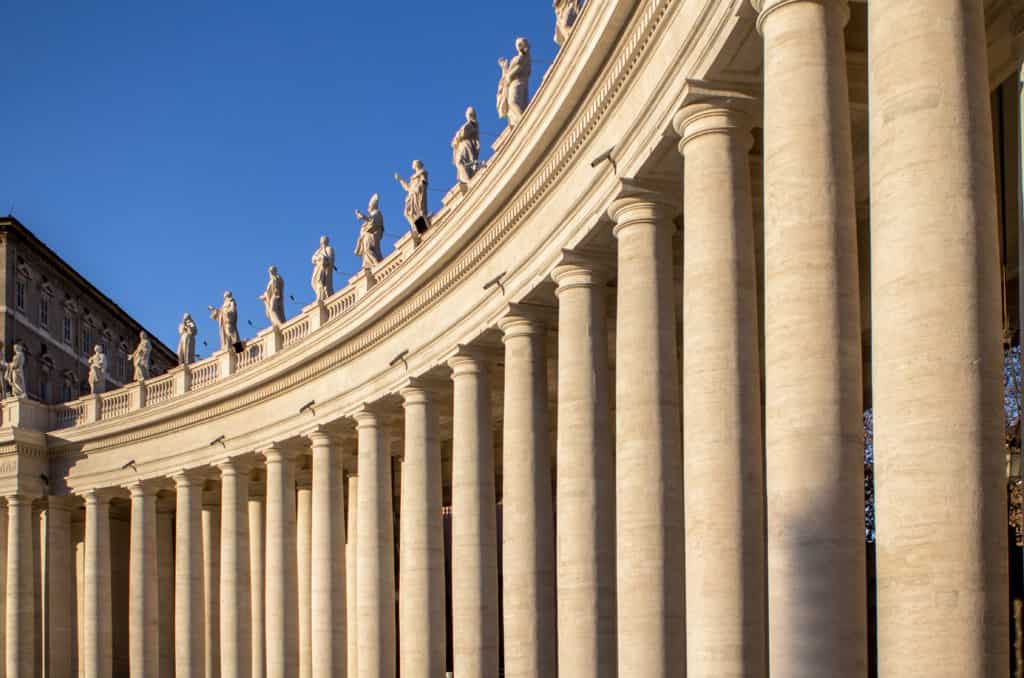
Castel Sant-Angelo
On your way back over the Tiber to central Rome, you’ll pass by the Castel Sant’Angelo. Also known as the Mausoleum of Hadrian, the site technically belongs with the ancient Rome Day 1 itinerary. However, its location near St. Peter’s and the Vatican makes it a good stop on Day 2.
Originally built to be the mausoleum for the Roman Emperor Hadrian and his family, the structure was later used by the popes as a fortress and castle and is now the Museo Nazionale di Castel Sant’Angelo.
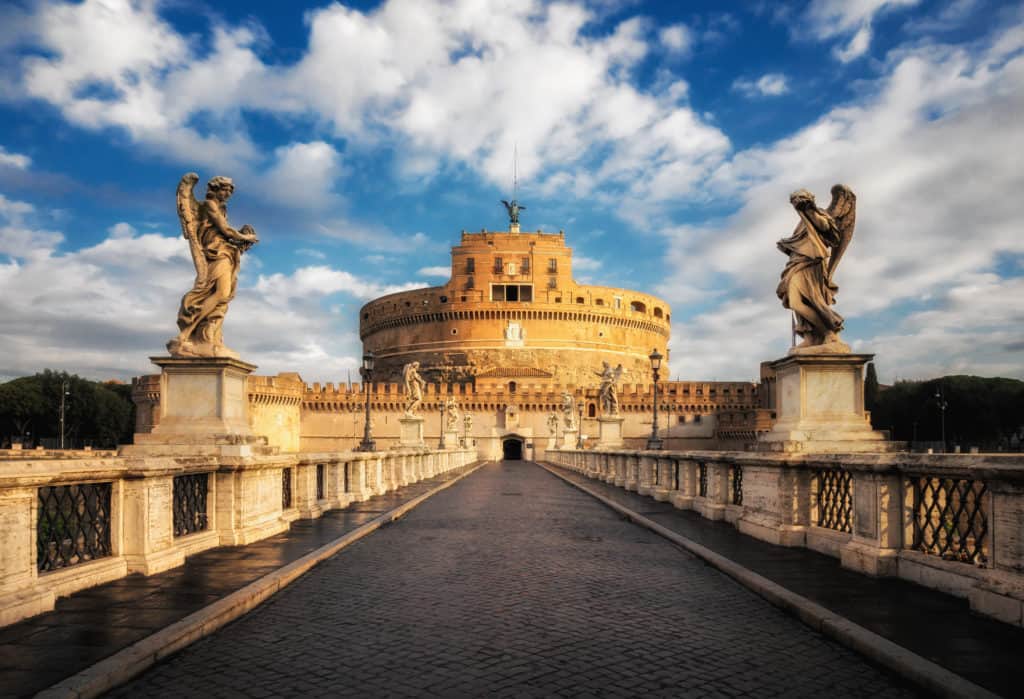
The museum is a worthwhile stop, primarily because of the view of Rome seen from the top. Go at sunset for some great photo ops. The area around Castel Sant’Angelo teems with tourists, so a view like the one below is virtually impossible!
Cross the bridge from the Castel Sant’Angelo and plunge back into medieval Rome. Stay around the Piazza Navona for the rest of the day, enjoying gelatos and people-watching, or continue your Catholic Rome wanderings by visiting two more churches.
Take a bus or a taxi back towards the Colosseum area to find San Pietro in Vincoli.
TIP: To get around Rome, consider taking taxis and busses. Taxi drivers skillfully weave through the dense traffic–better them than me! Prices are reasonable and worth it to save your feet. Busses in Rome are also a good bet. Use your phone to familiarize yourself with the bus routes. I prefer riding the bus to riding the metro (which has limited routes) because then I can watch Rome go by.
San Pietro in Vincoli
Not far from the Colosseum are a few churches worth visiting, particularly San Pietro in Vincoli (Saint Peter in Chains) where Michelangelo’s statue of Moses dominates the side altar.
Whenever I’ve visited this church, it’s been quiet and uncrowded. I love standing in front of the Moses statue and admiring the way Michelangelo sculpted Moses’s hands. Truly remarkable.
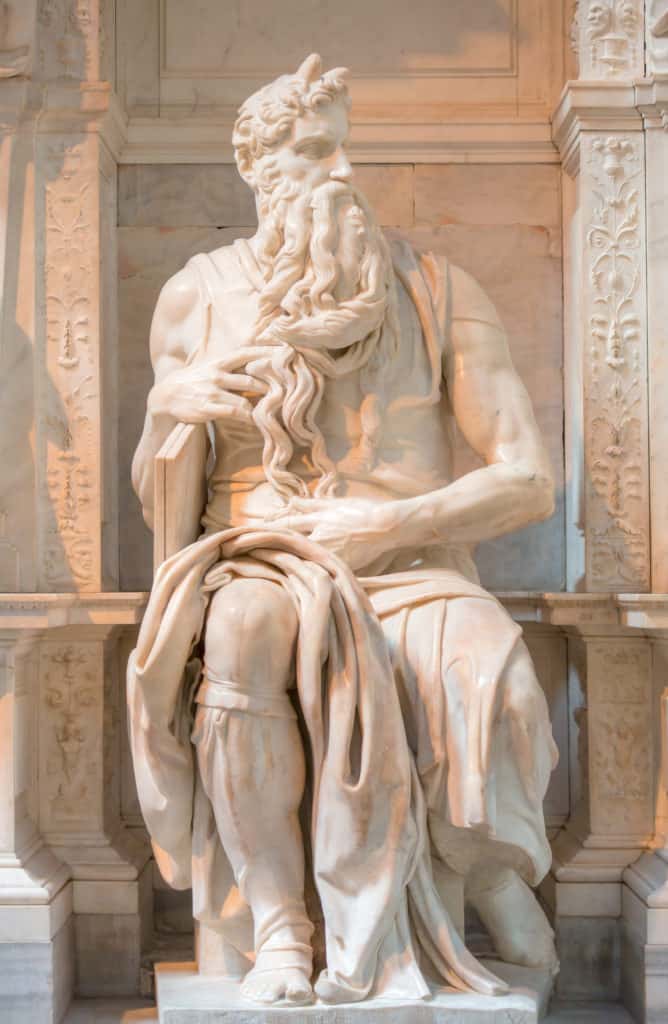
Basilica of San Clemente
Located not far from the Colosseum, the Basilica of San Clemente appeals to me because it was built on the site of a house containing a shrine of the Roman god Mithras. An underground passage leads to the excavated foundations of the 2nd-century Roman house. A relief on the altar shows the Persian sun god, Mithras, killing a bull.
The underground area is super dark and creepy, providing great scope for the imagination.
Day 3: Pastoral Rome
Rome is not all churches and ruins. It also has the marvelous Borghese Gardens, the atmospheric Trastevere region, and the achingly pastoral Appian Way, several metro stops from the center of the city.
See the Galleria Borghese and the Borghese Gardens in the morning, zip out to the Appian Way for lunch and a lovely afternoon stroll, then end your day with dinner in the Trastevere neighborhood across the Tiber from central Rome.
Borghese Gardens and the Galleria Borghese
Head to the Borghese Gardens and tour the Galleria Borghese. You must get tickets ahead of time. This stunning gallery reopened recently after being renovated. You’ll see some of the masterpieces of the Baroque age, including works by Caravaggio and the famous sculpture of Apollo and Daphne and The Rape of Proserpina by Bernini.
I first saw Bernini’s sculptures when I visited Rome in 1974. Works of that quality were thin on the ground in the Vancouver suburb where I’d grown up, so I was understandably impressed. Check out the way Pluto’s fingers press into Proserpina’s flesh and then remember that you’re looking at marble.
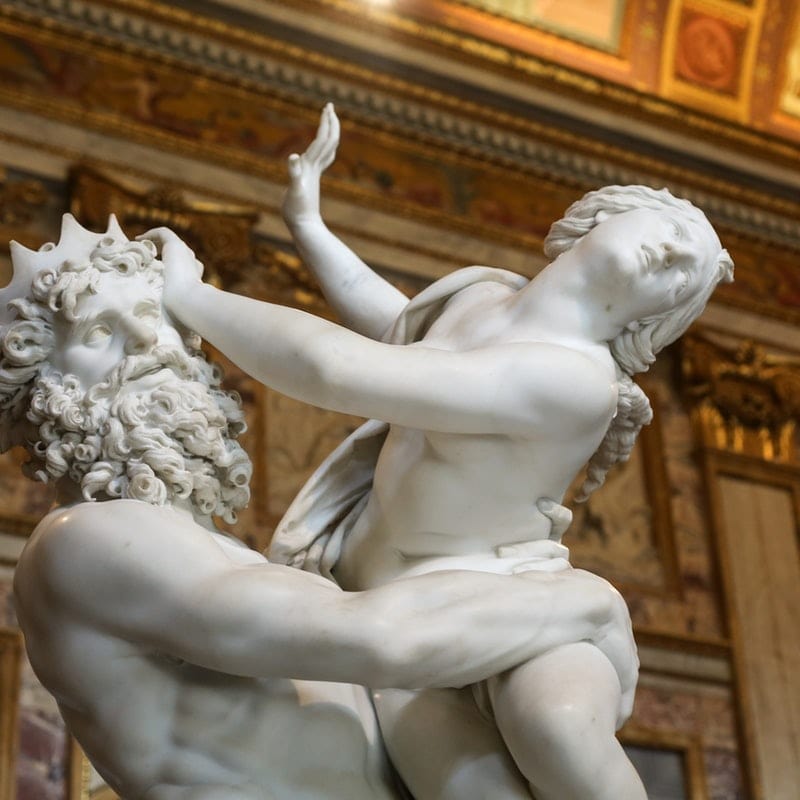
Amazing!
After partaking of the Baroque delights at the Galleria Borghese, spare an hour or so to wander around the gardens of the Villa Borghese. On a solo trip to Rome a few years ago, I stayed in a bed-and-breakfast about a block from the park and enjoyed early-morning strolls alongside Roman joggers.
Appian Way
In the afternoon, depending on the weather and your energy level, consider taking the metro out to the Appian Way (Via Appia Antica).
You’re transported from noisy modern Rome to an Arcadian landscape of plane trees and cypresses lining the original Roman road. Rent a bike or just stroll along the stone roadbed, imagining Roman chariots rumbling past.
Gregg and I spent a magical afternoon there, communing with the ghosts of the Roman rich people whose tombs line the road. The peace and quiet soothed nerves that can get a bit overstimulated by the hustle and traffic of downtown Rome.

Trastevere
Spend an evening strolling the quiet streets of the Trastevere neighborhood. The working-class area still feels authentic and Roman. Find a small restaurant overlooking one of the piazzas and settle in for dinner.
Trastevere is located on the same side of the Tiber as St. Peter’s Basilica, about a ten-minute bus ride alongside the river.

Here’s a good article about what to do and see in Trastevere.
Tours in Rome
Here are some tours offered by Tiqets.com:
And here are some tours offered through GetYourGuide:
Fancy a walking tour? The tours offered through GuruWalks are a good bet. Here are their tours in Rome.
Where to Stay in Rome
If you’re staying in Rome for more than two or three nights, consider renting an apartment. I’ve had good luck with VRBO and booking.com. When you stay in an apartment, you live like a temporary local, buying food from the local markets, and getting to know neighborhood restaurants and cafés.
Here are some good options:
The Sant’Angelo Apartments in the Jewish Ghetto area of Rome, very close to a lot of Roman ruins in addition to the Capitoline Museum and the Piazza Venezia, site of the Victor Emmanuel monument. The apartment was quite spacious and the location can’t be beat for exploring ancient Rome.
I also recommend Viam 6B located between the Spanish Steps and the Piazza Popolo–a very upscale and chi-chi part of Rome with lots of designer stores. The apartment was very modern and comfortable and included a beautiful outdoor terrace.
For more accommodation suggestions in Rome, see Recommended Plays to Stay in Italy That Will Make Great Memories.
Conclusion
Here are some more posts to give you a taste of Italy:

[…] Rome […]